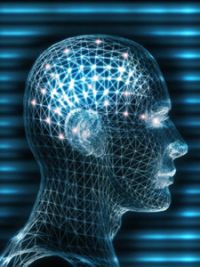Shel Silverstien
The Great Smoke Off
First appeared as a poem in Playboy in 1978
Lived a girl named Pearly Sweetcake - you probably knew her well
She was stoned 15 of her 18 years, and her story was widely told
That she could smoke 'em faster than anyone could roll
Well, her legend finally reached New York, that Grove Street walk-up flat
Where dwelt the Calistoga Kid, a beatnik from the past
He'd been rollin' dope since time began, now he took a cultured toke
And said, "Jim, I can roll 'em faster than any CHICK can smoke"
So a note gets sent to San Rafael for the championship of the world
The Kid demands a smoke-off; "Well bring him on!" says Pearl
"I'll grind his fingers off his hands! He'll roll until he drops!"
Says Calistog, "I'll smoke that chick till she blows up and pops".
So they rent out Yankee Stadium, and the word is quickly spread
Come one, come all, who walk or crawl, tickets just two lids a head
And from every town and hamlet, over land and sea they speed
The world's greatest dopers, with the world's greatest weed.
Hashishers from Morocco, hemp smokers from Peru
And the Shashniks from Bagun (who smoke the deadly Pu-ga-ru)
And those who call it "light of life"
And those that call it "boo".
See the dealers and their ladies, wearing turquoise lace and leather
See the narcos and the closet smokers, puffing all together
From the teenies who smoke legal, to the ones who've done some time
To the old man who smoked "reefer", back before it was a crime.
And the grand old House That Ruth Built is filled with the smokes and cries
Of 50,000 screaming heads, all stoned out of their minds
And they play the national anthem, and the crowd lets out a roar
As the spotlight hits the kid and Pearl, ready for their smoking war.
At a table piled up high with grass, as high as a mountain peak
Just tops and buds of the rarest flowers, not one stem, branch or seed
I mean, Maui Wowie, Panama Red, Acapulco Gold
Kif from East Afghanistan, and that rare Alaska Cold
And there's sticks from Thailand, ganj from the island,
And Bangkok's blooming best
(and some of that wet imported $hit That capsized off Key West).
There's Oaxacan tops and Kenya bhang, and Riviera fleurs
And that rare Manhattan Silver, that grows down in the New York sewers.
And there's bubblin' ice cold lemonade, and sweet grapes by the bunches
And there's Hershey bars and Oreos (in case anybody gets the munches)
And the Calistoga Kid, he smiles,
And Pearly, she just grins
And the drums roll low, and the crowd yells "GO GO GO!!"
And the world's first smoke-off begins.
Well, the kid he flicks his fingers once, and ZAP that first joint's rolled
Pearl takes one toke with her famous lungs, and WHOOSH that roach is cold
Then the kid he rolls his super-bomb, that would paralyze a moose
And Pearl takes one mighty hit, and ...... that bomb's defused
And then he rolls three in just ten seconds, and she smokes them up in nine
And everybody sits back and says, "Hey.... this just might take some time"
See the blur of flying fingers, see the red coal burning bright
As the night turns into mornin', and the mornin' fades to night
And the autumn turns to summer, and a whole damn year is gone
And the two still sit, on that roach-filled stage, smokin', and rollin'...on
With tremblin' hands he rolls his jays, with fingers blue and stiff
She coughs and stares with bloodshot gaze, and puffs through blistered lips
And as she reaches out her hand for another stick of gold
The Kid, he gasps, "Damn it, *****! There's nothin' left to roll!"
"NOTHIN' LEFT TO ROLL!" screams Pearl. "IS THIS SOME TWISTED JOKE?
I DIDN'T COME HERE TO **** AROUND; MAN, I COME HERE TO SMOKE!"
And she reaches 'cross the table and grabs his bony sleeves
And crumbles his body between her hands, like dried and brittle leaves
Flicking out his teeth and bones like useless stems and seeds
And then she rolls him in a zig-zag, and lights him like a roach
And the fastest man, with the fastest hands, goes up in a puff of smoke.
In the laid-back California town of sunny San Rafael
Lives a girl named Pearly Sweetcake - you probably know her well
She been stoned 21 of her 24 years, and her story is still widely told
How she still can smoke 'em faster than any dude can roll
While, off in New York City, on a street that has no name
There's the hands of the Calistoga kid, in the Viper Hall of Fame
And underneath his fingers, there's a little golden scroll
That says, "Beware of bein' the roller
When there's nothin' left to roll".
http://www.gaianbotanicals.com/



 'Program Yourself'
'Program Yourself'


